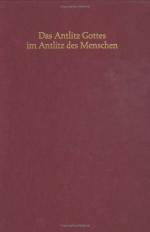|
This section contains 9,175 words (approx. 31 pages at 300 words per page) |

|
SOURCE: Heier, Edmund. “J. C. Lavater's Edifying and Physiognomic Ideas in Eighteenth-Century Russia.” In Studies on Johann Caspar Lavater (1741-1801) in Russia, pp. 6-36. Bern, Switzerland: Peter Lang, 1991.
In the following essay, Heier traces the impact of Lavater's Physiognomischen Fragmente on Russian culture.
Lavater's edifying views, as well as the total concept of physiognomic thinking, were introduced into Russia as part of the general wave of Western influence. One ought to keep in mind that Russia did not undergo the Western European Renaissance; therefore, the classical revival, and with it the tradition of physiognomy, entered Russia rather belatedly. This factor no doubt accounts for the absence of any physiognomic cult in Russia at the time when, in the West, the pursuit of physiognomy was at its peak. The physiognomic tradition established in the West through the republishing of classical authors like Polemon, Aristotle, Iamblichus and those of the...
|
This section contains 9,175 words (approx. 31 pages at 300 words per page) |

|


